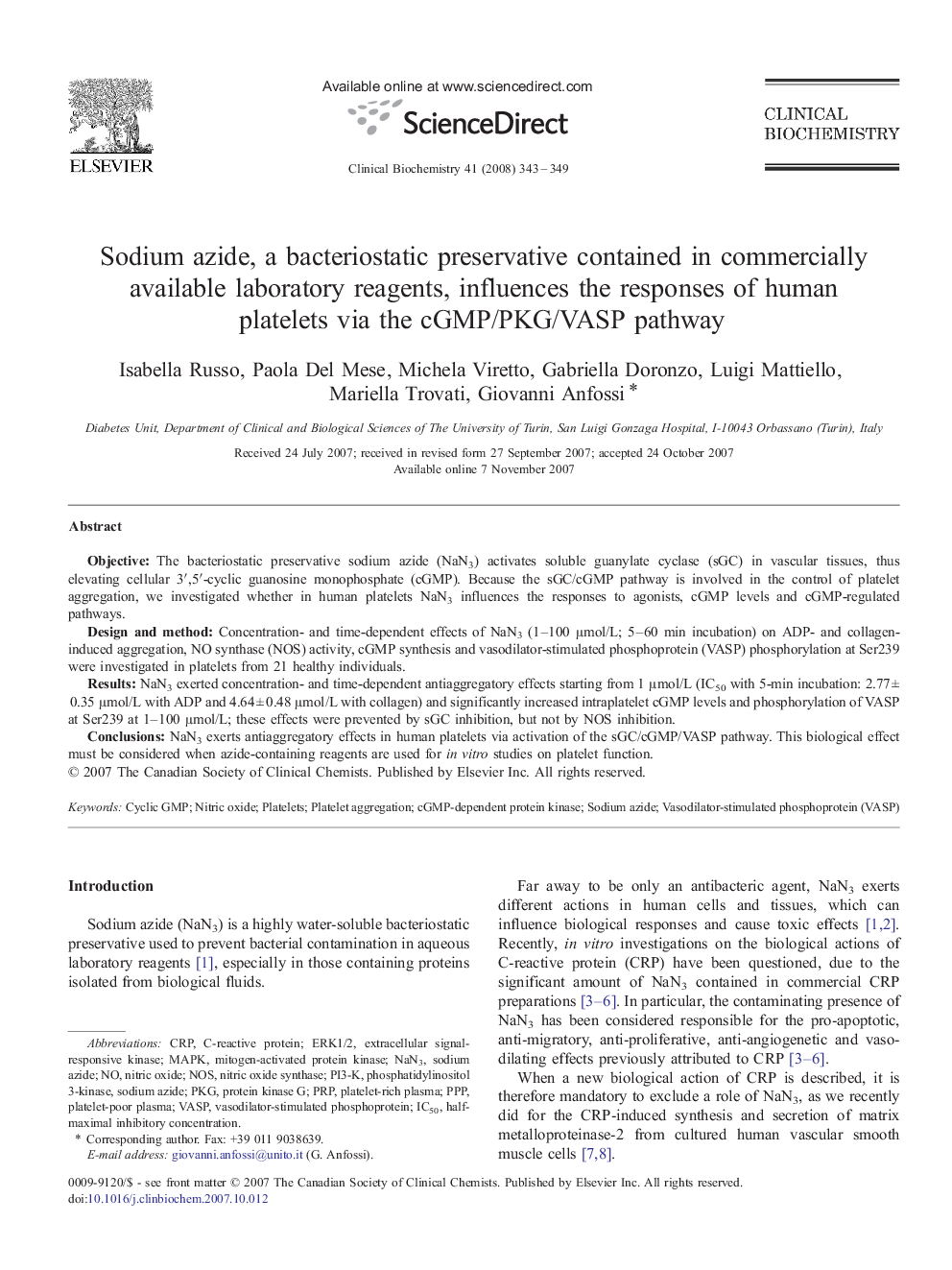| Article ID | Journal | Published Year | Pages | File Type |
|---|---|---|---|---|
| 1971667 | Clinical Biochemistry | 2008 | 7 Pages |
ObjectiveThe bacteriostatic preservative sodium azide (NaN3) activates soluble guanylate cyclase (sGC) in vascular tissues, thus elevating cellular 3′,5′-cyclic guanosine monophosphate (cGMP). Because the sGC/cGMP pathway is involved in the control of platelet aggregation, we investigated whether in human platelets NaN3 influences the responses to agonists, cGMP levels and cGMP-regulated pathways.Design and methodConcentration- and time-dependent effects of NaN3 (1–100 μmol/L; 5–60 min incubation) on ADP- and collagen-induced aggregation, NO synthase (NOS) activity, cGMP synthesis and vasodilator-stimulated phosphoprotein (VASP) phosphorylation at Ser239 were investigated in platelets from 21 healthy individuals.ResultsNaN3 exerted concentration- and time-dependent antiaggregatory effects starting from 1 μmol/L (IC50 with 5-min incubation: 2.77 ± 0.35 μmol/L with ADP and 4.64 ± 0.48 μmol/L with collagen) and significantly increased intraplatelet cGMP levels and phosphorylation of VASP at Ser239 at 1–100 μmol/L; these effects were prevented by sGC inhibition, but not by NOS inhibition.ConclusionsNaN3 exerts antiaggregatory effects in human platelets via activation of the sGC/cGMP/VASP pathway. This biological effect must be considered when azide-containing reagents are used for in vitro studies on platelet function.
